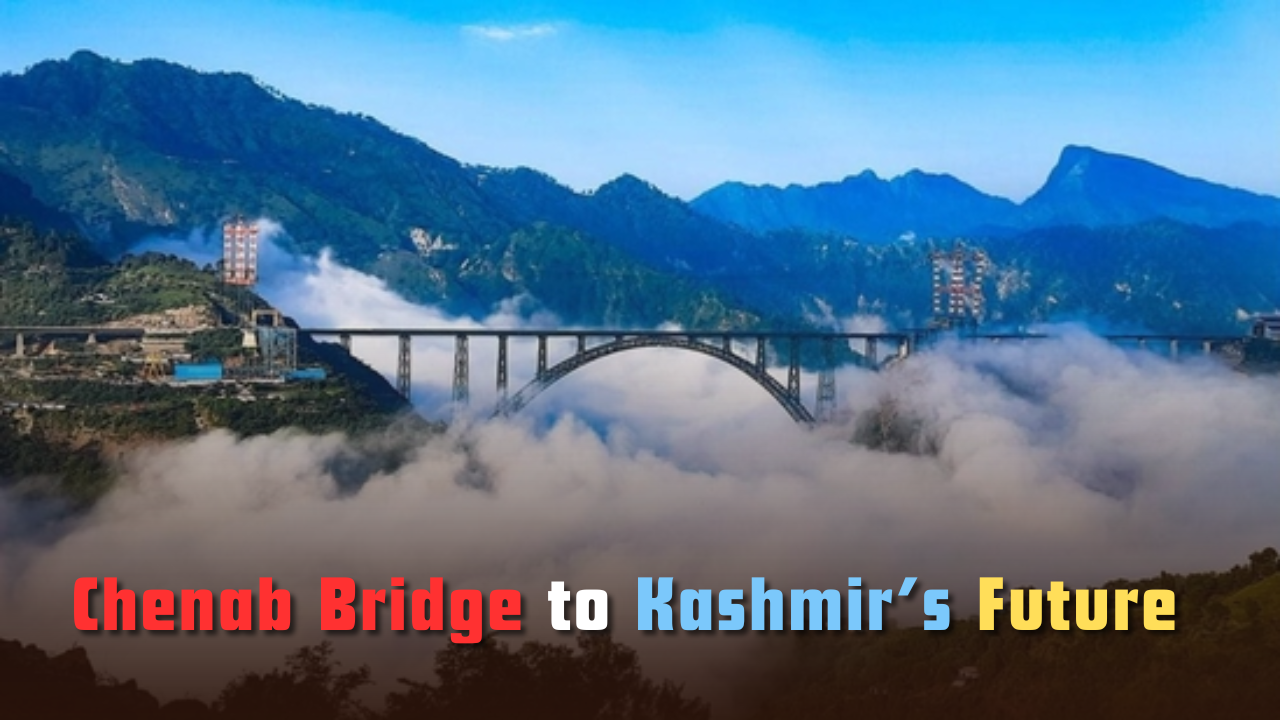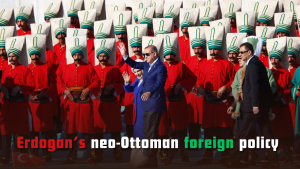Chenab Bridge to Kashmir’s Future
Chenab Bridge is a statement of political will. But Kashmiris need more than just infrastructure
Context: When Prime Minister Narendra Modi inaugurated the Chenab Railway Bridge — the world’s highest rail arch — in Jammu and Kashmir, it was more than just a feat of engineering.
More on News
- It was a national message. A declaration that India will connect, develop, and include, even in the face of adversity, insurgency, and historical trauma.
- Built at an altitude of over 1,000 feet, the Chenab Bridge represents not only steel and design brilliance but also the will to overcome division and despair.
- It is a physical and symbolic link — one that unites regions, reinforces sovereignty, and underscores India’s resolve to build, not break.
Terrorism Strikes Again — But So Does India’s Response
- Terror Attack: Only days before the bridge’s unveiling, terror returned to the Valley. The Pahalgam attack was not random — it was strategic.
- Terrorism thrives on disrupting hope just as it begins to feel real. But this time, India responded swiftly with Operation Sindoor, a robust military pushback.
- Diplomacy: Even more significant was the diplomatic counter-narrative.
- Indian parliamentary delegations reached out to global capitals to make the case that this was not a cry for justice but a cross-border subversion — planned, funded, and executed from Pakistan.
- The effort may have been orchestrated, but in global diplomacy, narrative management is power.
Pakistan’s Strategy: Talk Peace, Fuel Terror
- Pakistan continues to follow a predictable pattern — public calls for peace, private support for terror.
- Its aim is not justice for Kashmiris, but perpetual instability to serve its domestic politics.
- Every step forward in Kashmir — every road, bridge, school, or tourist arrival — threatens Islamabad’s victimhood narrative.
- Yet, India builds.
Infrastructure as Strategy: The Chenab Bridge and Beyond
- The Chenab Bridge is not merely an infrastructure project; it is a statement of civilisational intent.
-
- Where others incite, India invests. Where others divide, India connects.
- The government’s Kashmir strategy is often reduced to the lens of security. That view is not only narrow but also outdated.
- While his government has responded firmly to terrorism, it has also significantly expanded civic investment.
- Rural roads, electricity in remote villages, upgraded schools and hospitals, and a tourism revival — these are signs of a development-first strategy.
Security Is Not Enough — Trust Must Follow
- Steel can span mountains, but only trust can bridge hearts.
-
- Kashmir’s future depends not only on physical infrastructure but on empathy, partnership, and political imagination.
- Kashmir needs policies that empower people, not simply monitor them.
- It needs a shift from resistance management to capacity building — from surveillance to self-worth, from control to confidence.
The Kheer Bhawani Mela is one of the most significant religious festivals for the Kashmiri Pandit community, held annually at the Mata Kheer Bhawani Temple in Tulmulla village, Ganderbal district, Jammu and Kashmir. The festival is dedicated to Goddess Ragnya Devi, a revered deity in Kashmiri Hindu tradition and an incarnation of Goddess Durga.
A Return to Pluralism and Shared Identity
- This year’s Kheer Bhawani Mela, though subdued, still echoed the pluralism Kashmir once embodied.
- The Valley has long been a civilisational crossroads — shaped by voices like Lal Ded, who united communities in mystical verse and moral clarity.
- That tradition of coexistence must be preserved. India must not mistake silence for peace, or the absence of violence for the presence of harmony.
A Moment of Reckoning: Which Path Will India Take?
- Kashmir today stands between two powerful symbols: the terrorist attack in Pahalgam, and the triumph of engineering in Chenab.
- One reveals our vulnerabilities, the other, our potential.
- India has a choice: Retreat into the cycle of grievance, bureaucracy, and blame.
- Or advance steadily — with steel and soul — toward inclusion, investment, and trust.
Subscribe to our Youtube Channel for more Valuable Content – TheStudyias
Download the App to Subscribe to our Courses – Thestudyias
The Source’s Authority and Ownership of the Article is Claimed By THE STUDY IAS BY MANIKANT SINGH


